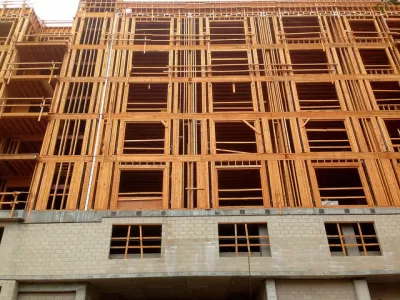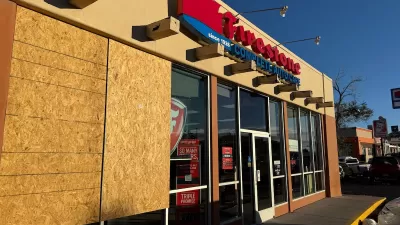Too many new buildings today are simply ugly—with little to add to urban streets, and resembling buildings in every other city. Jason Hart, AIA reviews some design basics, which he hopes will arrest the ugly building epidemic.

"Too many new buildings today are simply ugly behemoths. They have little to add to our urban street scenes, and many look alike from city to city, with the same tired shapes, confused compositions, and bland materials. They give modern a bad name and only help galvanize public backlash – often with good reason," writes Jason Hart, AIA.
He believes that building owners and developers, municipal review boards, and architects, by revisiting the fundamentals, can stop what he refers to as an "epidemic" of ugly buildings:
We could debate the many scapegoats for ugliness: building codes, greed, politics, talent, time, but most of these building designers have simply forgotten the basics. Regardless of architectural style, all design, at its basic core, is the artful control of three elements: size, proportion, and the organization of parts (windows, cornices, columns, etc. for buildings).
Hart goes on to review how each of these elements are utilized and interrelate to make a functional and attractive building. He concludes:
Good buildings start with good planning, they pay attention to how people use them, and they balance size, proportion, and visual organization. Good architecture masters these aspects, and goes further to convey meaning and purpose through ideas, history, and technology that contributes to the identity of our communities. We don’t have to settle for ugly buildings; we can demand better.
FULL STORY: Stopping the Ugly Building Epidemic with Design Basics

Planetizen Federal Action Tracker
A weekly monitor of how Trump’s orders and actions are impacting planners and planning in America.

Map: Where Senate Republicans Want to Sell Your Public Lands
For public land advocates, the Senate Republicans’ proposal to sell millions of acres of public land in the West is “the biggest fight of their careers.”

Restaurant Patios Were a Pandemic Win — Why Were They so Hard to Keep?
Social distancing requirements and changes in travel patterns prompted cities to pilot new uses for street and sidewalk space. Then it got complicated.

Platform Pilsner: Vancouver Transit Agency Releases... a Beer?
TransLink will receive a portion of every sale of the four-pack.

Toronto Weighs Cheaper Transit, Parking Hikes for Major Events
Special event rates would take effect during large festivals, sports games and concerts to ‘discourage driving, manage congestion and free up space for transit.”

Berlin to Consider Car-Free Zone Larger Than Manhattan
The area bound by the 22-mile Ringbahn would still allow 12 uses of a private automobile per year per person, and several other exemptions.
Urban Design for Planners 1: Software Tools
This six-course series explores essential urban design concepts using open source software and equips planners with the tools they need to participate fully in the urban design process.
Planning for Universal Design
Learn the tools for implementing Universal Design in planning regulations.
Heyer Gruel & Associates PA
JM Goldson LLC
Custer County Colorado
City of Camden Redevelopment Agency
City of Astoria
Transportation Research & Education Center (TREC) at Portland State University
Camden Redevelopment Agency
City of Claremont
Municipality of Princeton (NJ)





























